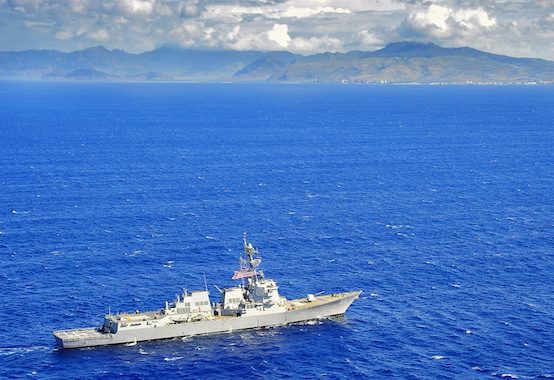Building a Navy That Won’t Sink the Economy

America is by geography a maritime state. Even with a vastly shrunken defense budget, we must remain a naval power.
Fortunately, we can. The first reason is that that we face no serious naval challengers. Only Russia and, prospectively, China, have fleets that could contest with ours beyond coastal waters. Russia is not an enemy, and strategy dictates that we not let China become one.
Second, the end of the Cold War made many of the ships in the U.S. Navy obsolete—including some under construction. Heading the list are cruisers and destroyers armed primarily with the Aegis anti-aircraft system. Third World air forces pose little threat to our ships. A handful of Aegis ships would suffice, especially since the effectiveness of Aegis has never been demonstrated in honest testing.
Our twelve big aircraft carriers are worth retaining, because big floating boxes with flat tops are useful in a variety of roles, not just to transport aircraft. The same goes for our carrier-like amphibious ships.
The Navy’s 14 ballistic missile submarines should be retained, because our strategic nuclear forces not only deter other nuclear powers, they also make large-scale conventional warfare unlikely. That saves a lot of money.
Attack submarines are the modern capital ship, in that they determine command of the sea. The current number of 53 is about right, but new nuclear attack subs should be smaller and cheaper—and we need some non-nuclear boats as well, especially for coastal waters.
At this point, we find ourselves wanting to keep a lot more ships than we could afford on a $100 billion defense budget. The key to retaining an adequate Navy with much less money is a revival of the centuries-old practice that diminished in the 19th century and disappeared in the 20th. In peacetime, few of the Navy’s ships should be in commission. Most would be in reserve or, to use the 18th-century term, “in ordinary.”
To man the fleet on mobilization, the new Navy would adopt a variant of the old Prussian army reserve system. Each active-duty crew would go into reserve together, like a regiment. When mobilized, they would man a reserve ship identical to the one they had served on. With the same people working together doing the same jobs on the same type of ship, reserve ships could quickly attain active-duty levels of efficiency. An active-duty sailor would serve three years, then be in reserve for nine years, allowing each ship manned in peacetime to support three other ships in reserve.
Future surface warships would be built to support and strengthen the reserve system. They would all be designed to serve as merchant ships in peacetime, converting to warships when needed by plugging in modularized weapons and sensors. This would take advantage of a little-noticed but historic change: for the first time since the 16th century, the hulls and propulsion plants of merchant and warships are similar. Most warships have no armor, and some merchant ships are designed for speeds of 30 knots or more. If anything, the merchant ships are sturdier than the warships.
This approach would revive a now-moribund American merchant marine with crews of Naval reservists. Weapons and sensors officers would not need to be in ship crews in peacetime; they could practice their skills as easily in Keokuk as at sea. These merchant ships would require subsidies to be competitive, but would achieve vast savings by keeping warships in reserve.
Fourth Generation war levies a new requirement of on the Navy: it must be able to take control of a region’s coastal and inland waters. This is a powerful way to tilt local political balances without having to invade and occupy a country. Such shifting of local balances, by a variety of means, will be how we often deal with Fourth Generation threats.
At present, the U.S. Navy has little capability to operate in coastal and inland waters. Even as budget pressures reduce the overall size of the fleet, we need to build new craft for this mission. Unlike the Navy’s new and hyper-expensive Littoral Combat Ship, these should be based on commercial designs such as fishing boats. They should be organized in deployable packages or flotillas, each with a mother ship that can serve as a base. As with the rest of the Navy, in peacetime most flotillas would be in reserve.
These reforms would permit the United States to maintain itself as a naval power, indeed the dominant naval power when mobilized, within a peacetime defense budget of $100 billion. They would simultaneously give us a fleet designed for future war, not for contesting the Pacific with the aircraft carriers of Imperial Japan.
The current Navy leadership, and its vast attending squadron of contractor bumboats, will respond by furiously puffing the Dragon, warning that the fleet described here would not be adequate for war with China. That is one more point in its favor.
Comments